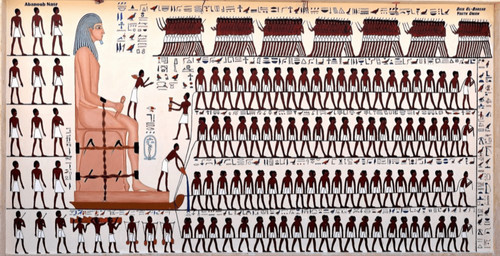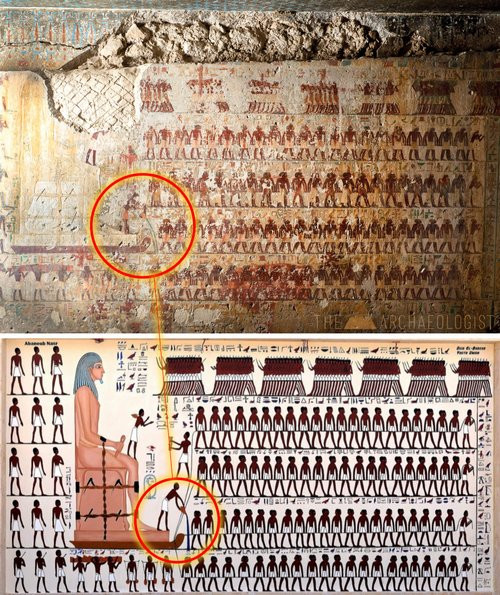For centuries, the towering monuments of ancient Egypt have captivated the human imagination, leaving us in awe of their grandeur and the ingenuity behind their construction. Among the many mysteries surrounding these remarkable structures, one question has persisted: how did the ancient Egyptians move and erect such massive stones?
Deep within the tomb of Djehutihotep, a prominent governor during the Middle Kingdom, lies a treasure trove of insights into the daily life and labor-intensive activities of that era. One mural, in particular, has shed new light on the enigma of monument construction, depicting a sizable group of workers hauling a colossal statue.
A Tomb Unveiling Ancient Practices

Initially misunderstood as a religious procession, this mural is now believed to illustrate a logistical procedure used by the ancient Egyptians. The pivotal moment captured in the painting shows a laborer pouring water on the sand before a large sled carrying the statue.
Wetted Sand: A Clever Solution
What was once thought to be a purification rite is now considered by some scholars to be a representation of a clever technique used to facilitate the movement of heavy loads. By wetting the sand, the workers could have significantly reduced the friction between the sled and the sand, allowing them to pull the massive weight with less effort.
The Evolving Nature of Archaeological Scholarship

The scientific community’s reinterpretation of this scene is a testament to the evolving nature of archaeological scholarship. Egyptologists like Professor Daniel Bonn have shifted the perspective from a ritualistic interpretation to a practical one, suggesting that the solution to moving massive stone blocks has been in plain sight all along.
Practicality Over Mysticism
The paradigm shift from a priestly to a practical interpretation of the water in the mural exemplifies the importance of interdisciplinary research in archaeology. By applying physics to the ancient problem, researchers like Bonn offer a plausible explanation that fits both the evidence and our understanding of the materials and physics involved, dismissing the need for mystical or outlandish explanations.
The Ancient Egyptians as Clever Engineers
This interpretation positions the ancient Egyptians not as practitioners of forgotten arts but as clever engineers who utilized the resources and knowledge at their disposal to overcome seemingly insurmountable obstacles.
The Enduring Legacy of Ancient Ingenuity

The recognition of the ancient Egyptians’ problem-solving prowess enriches our understanding of their culture and technological capabilities. It dismisses the oft-propagated idea that we are at a zenith of knowledge, reminding us that our ancestors were not mere primitive figures in the annals of history but were, in fact, quite advanced in their understanding of the world around them.
A Lesson for Contemporary Scholars and Enthusiasts
This reevaluation of ancient Egyptian logistics does more than just provide a potential answer to a long-standing question. It invites contemporary scholars and enthusiasts alike to look back at ancient cultures with a renewed respect and curiosity, recognizing that there is much to learn from the way our predecessors approached and surmounted the challenges of their time.
In sum, the ancient Egyptians continue to teach us that solutions to complex problems often lie in a blend of observation, knowledge of natural laws, and a touch of practical ingenuity—a lesson as relevant today as it was in the era of the pharaohs.
